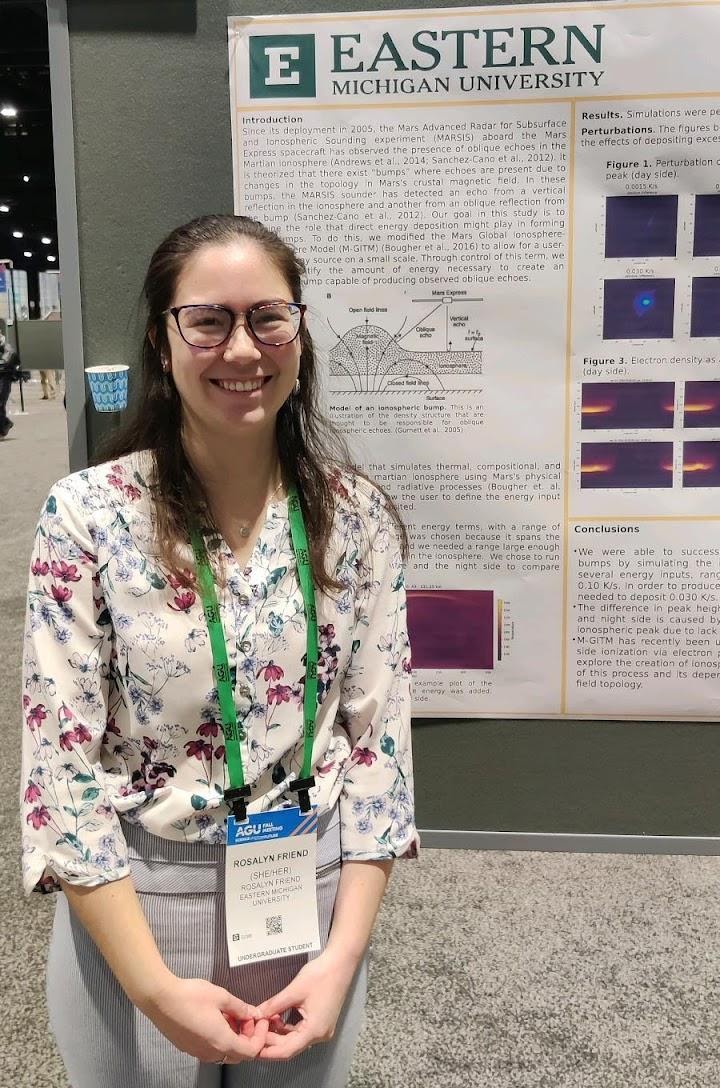News and Events
EMU Students selected to participate in national high altitude balloon project
Students from the Department of Physics and Astronomy were recently selected to participate in the Nationwide Eclipse Balloon Program. The team, EMU Atmospheric Physics Exploration (EMU APEX), will join approximately 60 other institutions from around the country to build and launch high altitude weather balloons during two upcoming solar eclipses and the data collected will be used to study changes to the atmospheric energetics and dynamics during these two events. As part of the program, EMU APEX will be provided with the equipment necessary to build and launch the balloon experiments. Over the course of the next year and a half, a diverse group of EMU students will work to learn about the physics of the atmosphere, the engineering that goes into designing and building a high altitude balloon payload, and the procedures for launching a balloon and running an atmospheric science experiment. The team will then travel to the Southwest US to perform a launch during the October 14, 2023 annular eclipse and to the midwest for the total eclipse on April 8, 2024. This project is supported by funding from NASA as well as the state Space Grant Consortiums. More information can be found at the Eastern Echo.
EMU APEX is always looking for new EMU campus members that are interested in launching high altitude balloons. No experience is necessary! Please see the club's OrgSync page for more information and to become a member.
Physics Research Major Rosie Friend Presents at the American Geophysical Union Fall Meeting

Rosie Friend, a Physics Research major, presented a poster at the 2022 Fall Meeting of the of the American Geophysical Union, the most influential event in the world dedicated to the advancement of Earth and space sciences. The meeting was held in Chicago, Illinois, Dec. 12 - 16. Rosie started working with Physics and Astronomy faculty member Dr. David Pawlowski to computationally model features of the Martian ionosphere that are observed in measurements made by the Mars Express orbiter.
Rosie's work aims at developing a better understanding of the origin of echoes seen in radar signals scattered by the Martian ionosphere. One idea is that the echoes occur where there are local increases ("bumps") in the magnetic field of Mars. To test this idea, Rosie worked with Dr. Pawlowski to modify the Mars Global Ionosphere-Thermosphere Model (M-GITM) to allow them to deposit energy into the model ionosphere and better understand the exchange of energy from the sun, through the solar wind and into the Martian atmosphere.
Rosie said that "going to the AGU Fall meeting was an amazing opportunity. I started doing research my freshman year and it's really exciting to see the progress I've made from when I first started to now presenting at my first big conference."
Dr. Pawlowski commented, "Rosie’s research allows us to probe the ionosphere in a way that isn’t possible by examining observations alone. Through this work, we can obtain a better understanding of the energetics of Mars’s atmosphere and ultimately be better prepared for future missions to the red planet."
EMU Physics Students participate in Summer REUs!
Each year, several EMU physics students participate in the NSF REU program where they gain valuable experience working in cutting edge research labs at institutions around the country. During summer 2022, Physics Research Student Avital Keeley worked on an exoplanet research team at UCSB. Each student in the program had their own project and Avital was tasked with writing a Python code to compare the performance of instruments used to directly image exoplanets. Using on-sky data from multiple instruments and evolutionary models used to simulate planet formation, she wrote software that takes input parameters about a target star (the star’s age, the distance to the system, and the stellar magnitude) and yields a plot of masses that are predicted to be imageable by each instrument. Using these results, direct imaging teams can decide which instrument would image a system at a higher resolution so they can optimize their observing time. Avital is continuing this research with her advisor and mentor during the fall 2022 semester to improve the code.
In Toledo, EMU Physics major Hannah Popofski participated in the University of Toledo’s Physics and Astronomy REU Program. During the experience, Hannah worked on an image resolution enhancement project with her advisor, Dr. Aniruddha Ray, and graduate student Somaiyeh Khoubafarin. The project involved the use of 150–180-micron spherical lenses (“microlenses”) that were layered under a microscopic sample. These microlenses collected scattered light from the sample to form a virtual image of higher resolution and magnification than what could be obtained without the mircolenses. Hannah imaged many different samples using this method of resolution enhancement, including gold nanoparticles, sickle cells, and fluorescent polystyrene spheres. Her best results yielded an image of fluorescent spheres that had 8.3 times the magnification than that obtained without the microlenses.
Society of Physics Students (SPS) Meetings
The EMU chapter of the Society of Physics Students meets at 5 pm on Mondays in Strong Hall 228! Please email Dr. Dave Pawlowski or check out our club on OrgSync for more information.
EMU Planetarium
The new projection system is up and running and it is beautiful! Please stop by to check out one of your fantastic shows. Visit the EMU Planetarium website more information about our planetarium and upcoming events.
Sherzer Observatory
Visit the Sherzer Observatory website for observing information and times.
